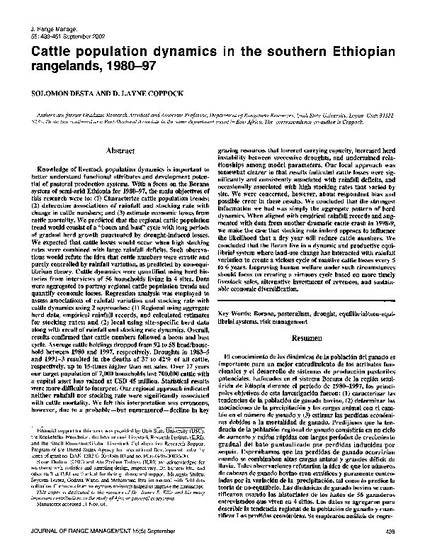
Article
Cattle Populations Dynamics in the Southern Ethiopian Rangelands
Journal of Range Management
(2002)
Abstract
Knowledge of livestock population dynamics is important to better understand functional attributes and development potential of pastoral production systems. With a focus on the Borana system of semi-arid Ethiopia for 1980-97, the main objectives of this research were to: (1) Characterize cattle population trends; (2) determine associations of rainfall and stocking rate with change in cattle numbers; and (3) estimate economic losses from cattle mortality. We predicted that the regional cattle population trend would consist of a "boom and bust" cycle with long periods of gradual herd growth punctuated by drought-induced losses. We expected that cattle losses would occur when high stocking rates were combined with large rainfall deficits. Such observations would refute the idea that cattle numbers were erratic and purely controlled by rainfall variation, as predicted by non-equilibrium theory. Cattle dynamics were quantified using herd histories from interviews of 56 households living in 4 sites.
Keywords
- Cattle Populations Dynamics,
- Southern Ethiopian,
- Rangelands
Disciplines
Publication Date
2002
DOI
DOI: 10.2307/4003221
Citation Information
Desta, S., and D.L. Coppock. 2002. Cattle population dynamics in the southern Ethiopian rangelands, 1980-97. Journal of Range Management 55: 439-451.
